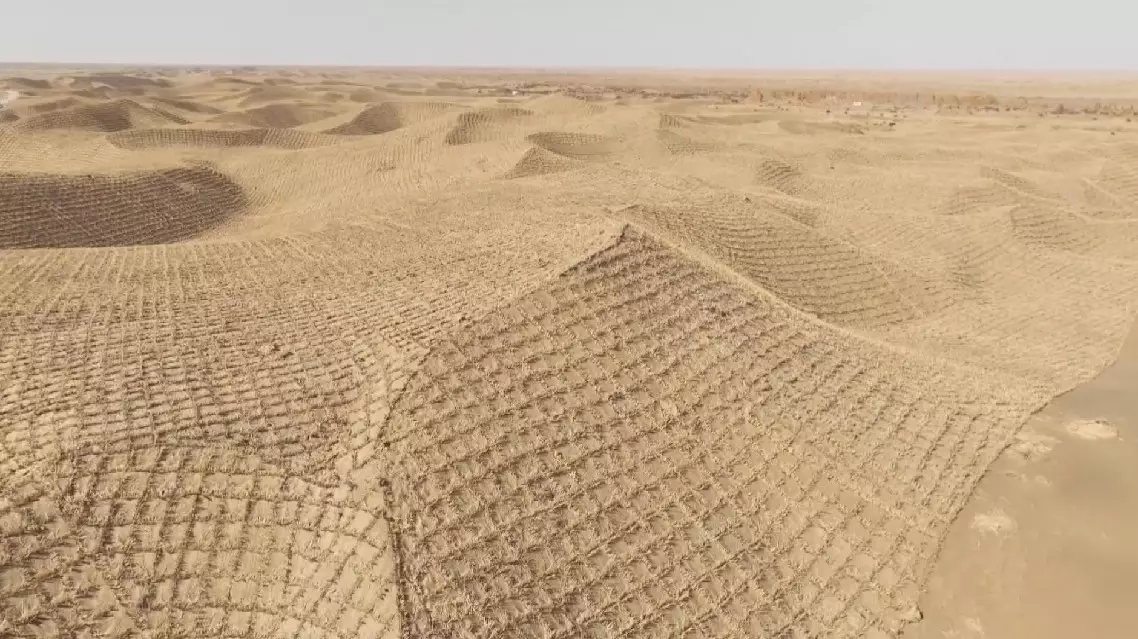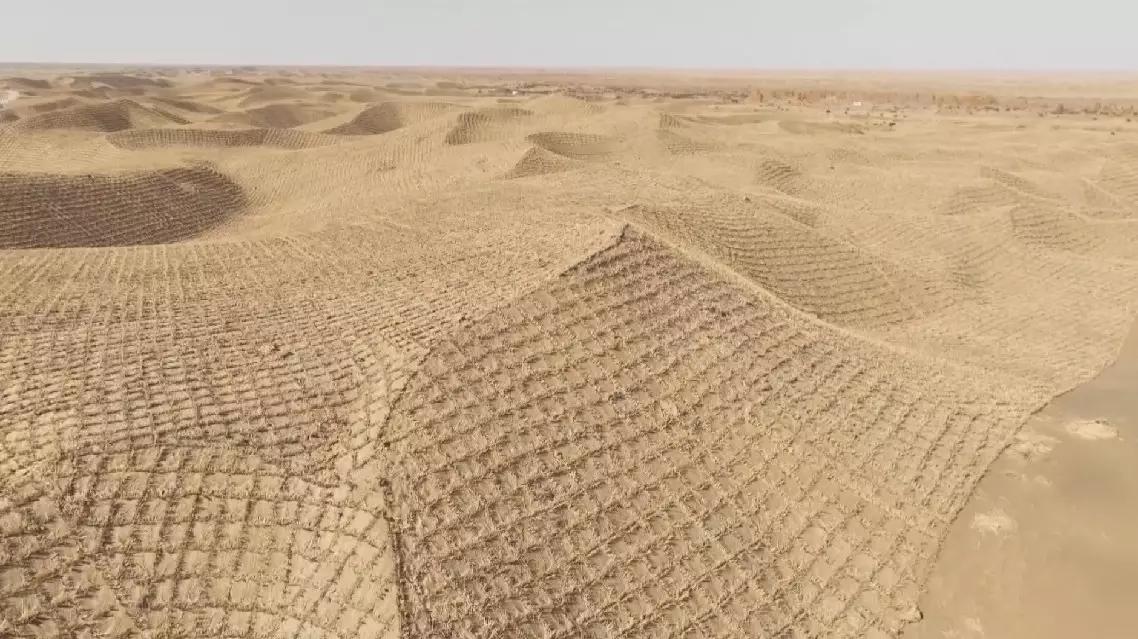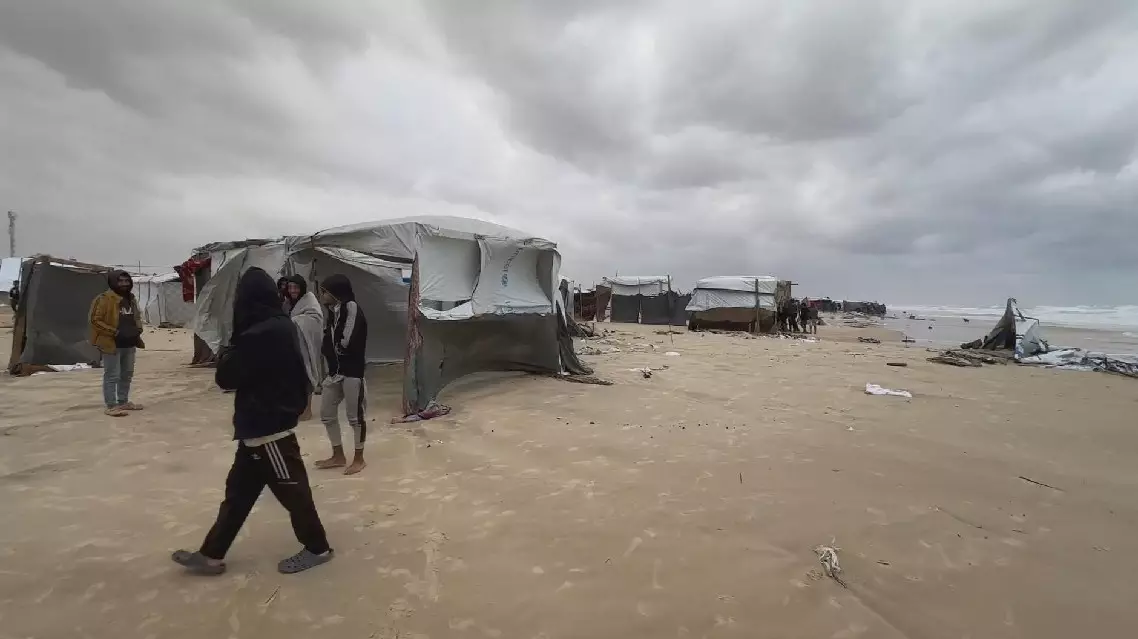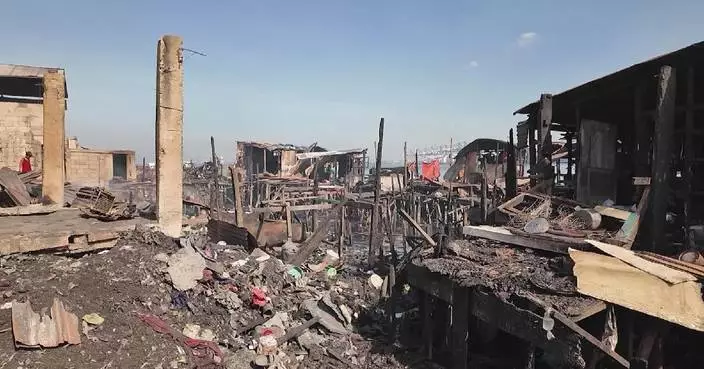The Taklimakan Desert, known as the "Sea of Death," has been completely encircled with a sand-blocking green belt stretching 3,046 km, said local authority in northwest China's Xinjiang Uygur Autonomous Region.
On Thursday morning, several plant species, including Populus euphratica (more commonly known as "desert poplar"), sacsaoul and red willow, were planted on sandy land in Yutian County on the southern edge of the desert, marking the completion of the final stretch of the green belt, according to the Xinjiang regional forestry and grassland bureau.
The Taklimakan covers 337,600 square km and its circumference measures 3,046 km, making it the largest desert in China and the second-largest drifting desert in the world.
It has taken more than 40 years to fully enclose the desert with a green belt. By the end of 2023, a 2,761-km-long green belt connected scattered oases, leaving only the final, most challenging section.
This final stretch, approximately 285 km long, runs through the southern part of the desert and faces the most severe wind and sand hazards. Since this year, Xinjiang has taken targeted and scientific measures to close this gap.
The green belt will be further widened in the future to prevent the desert incursion, according to Wang Gang, deputy director of desertification control of the regional forestry and grassland administration.
"Next, we will focus on the comprehensive environmental governance of the Taklimakan Desert. Combining biological and engineering sand-fixation efforts with photovoltaic projects and solar farms, we will continue to widen the green belt to prevent the spread of sand sources and forge a solid barrier to tightly "lock the Taklimakan Desert," Wang said.
Alongside the green belt, efforts have been made to promote the development of sand industries, such as the growing of cistanche and other crops, to benefit local residents.
"During desertification control, we have gradually tested the planting of sacsaoul trees, red willows and Ziziphus jujube trees. Farmers will be able to acquire income from both herba cistanches in the ground and Ziziphus jujube in the trees," said Jia Cunpeng, head of the forestry and grassland administration of Yutian County.
Starting from next spring, local farmers will grow Chinese herbs in the area, such as isatis root and Chinese liquorice, according to local officials.
"People in Hotan Prefecture lack arable land resources, but after the transformation of the desertified land, they can grow plants and raise their income to become richer. This is an approach suited to our prefecture for both desertification control and industrial development," said Deng Xiaobo, Party Secretary of the forestry and grassland administration of Hotan Prefecture.
The Taklimakan Desert control project is a part of China's Three-North Shelterbelt Forest Program (TSFP), the world's largest afforestation program to tackle desertification.
The TSFP was launched in 1978 and is scheduled to be completed by 2050.
In June 2023, China proposed to turn the TSFP into a fully functional and unbreakable "green Great Wall" and ecological security barrier in northern China.
Since 1978, China has expanded its afforestation area by 32 million hectares under the TSFP. The afforestation area under the program is projected to encompass over 4 million square km across 13 provincial-level regions by 2050, accounting for 42.4 percent of the country's total land area.
Over the past 46 years, the forest coverage rate of the TSFP-covering areas has risen from 5.05 percent to 13.84 percent. Progress has been made in desertification and soil erosion control, while about 30 million hectares of farmland have been protected.

China completes green belt encircling Taklimakan Desert

China completes green belt encircling Taklimakan Desert









